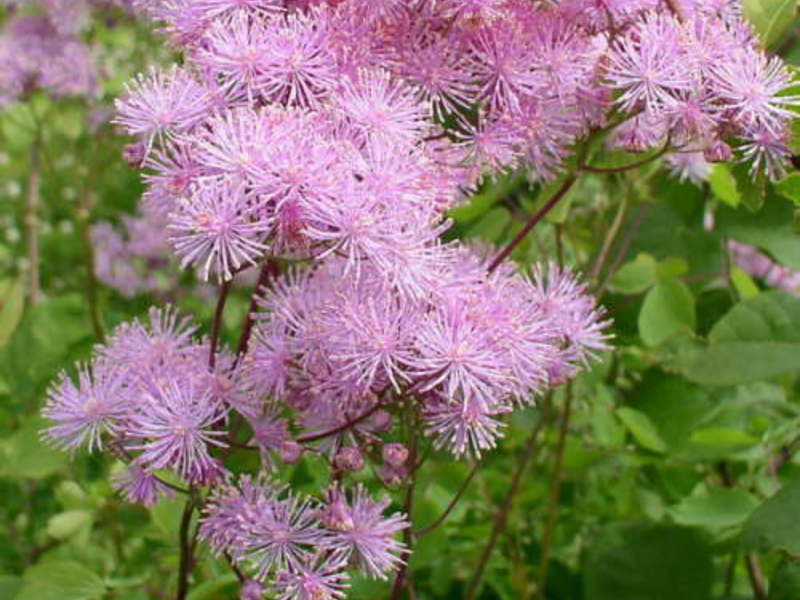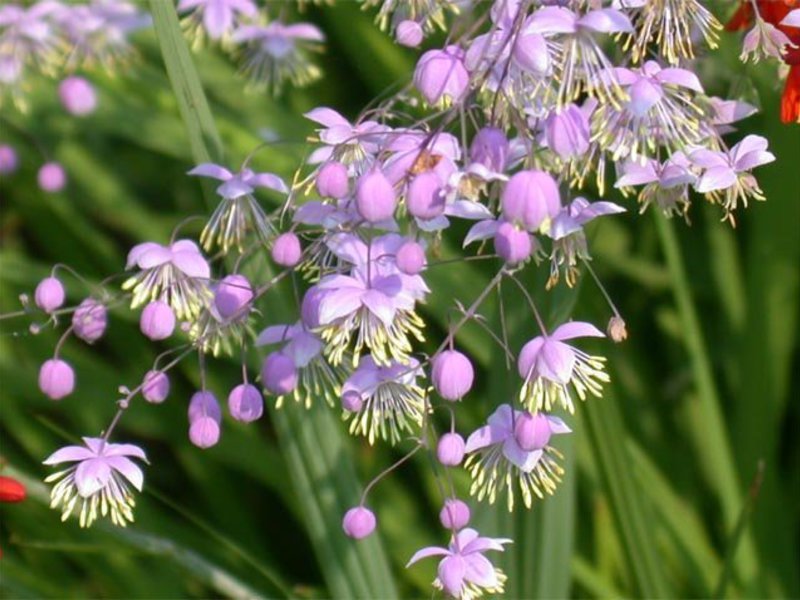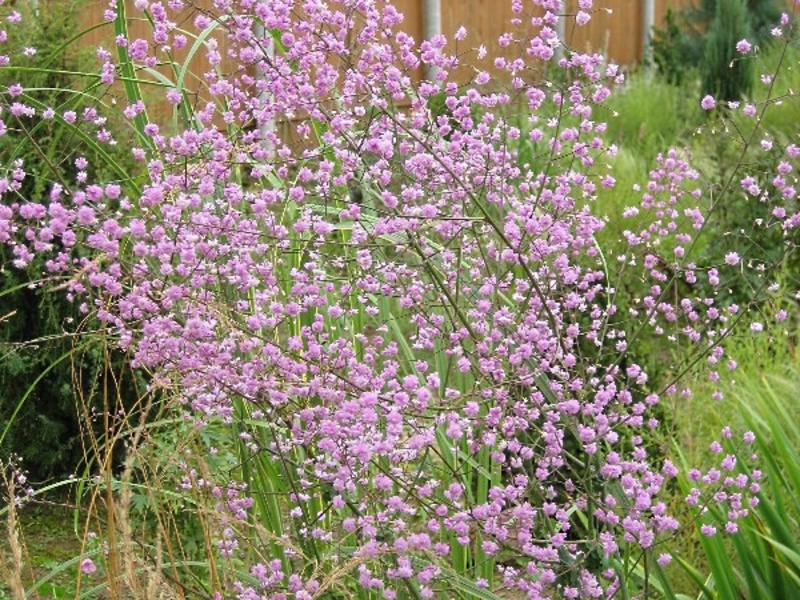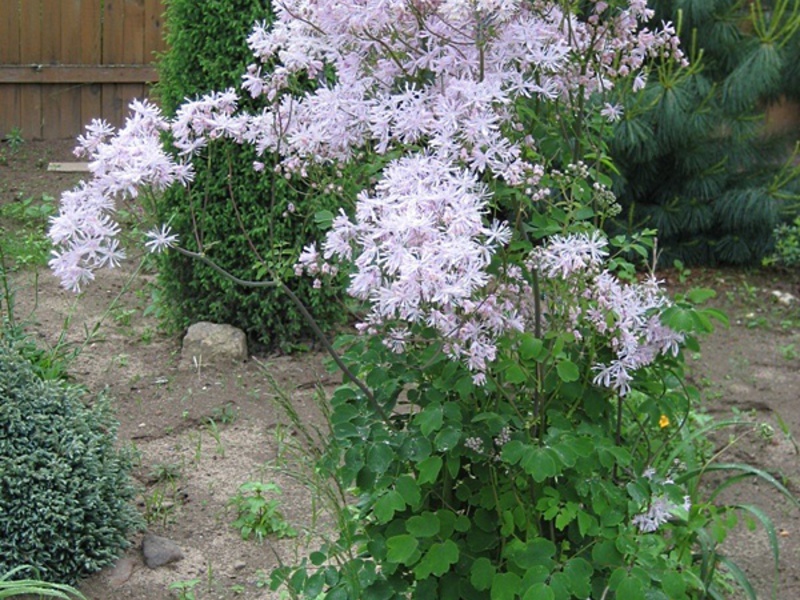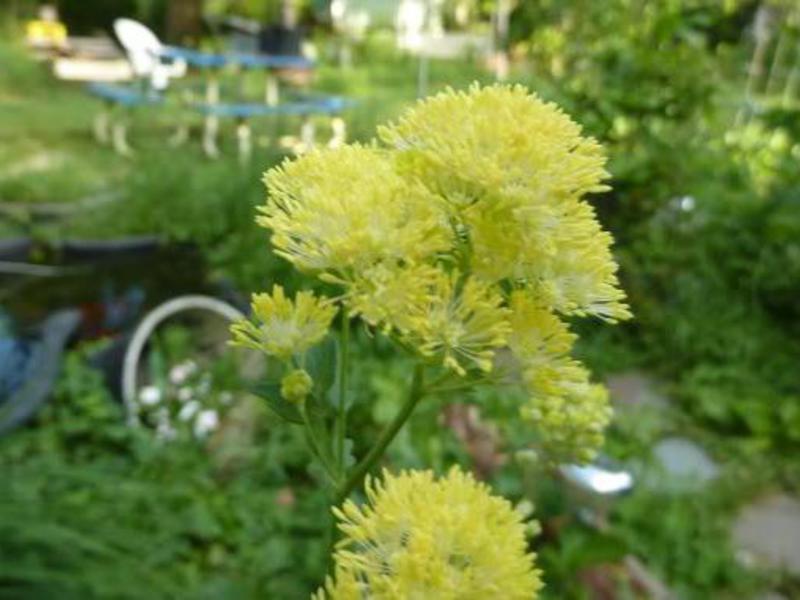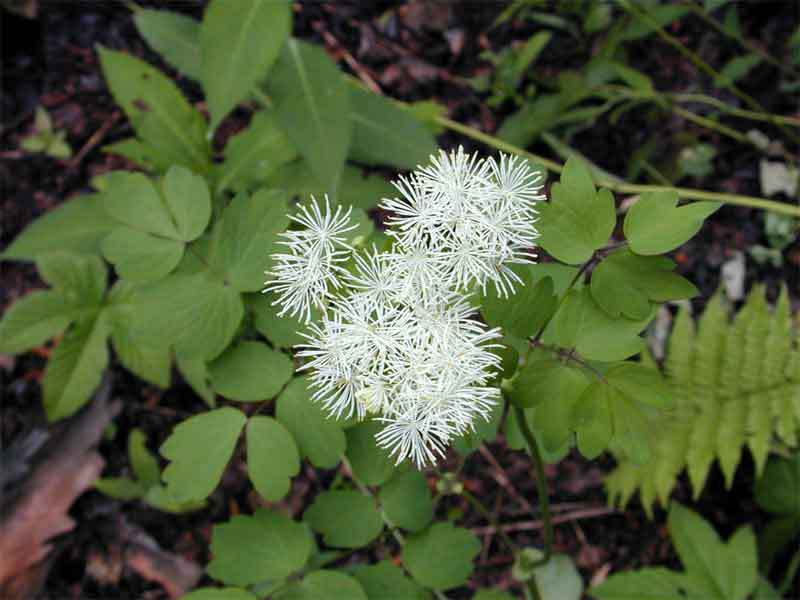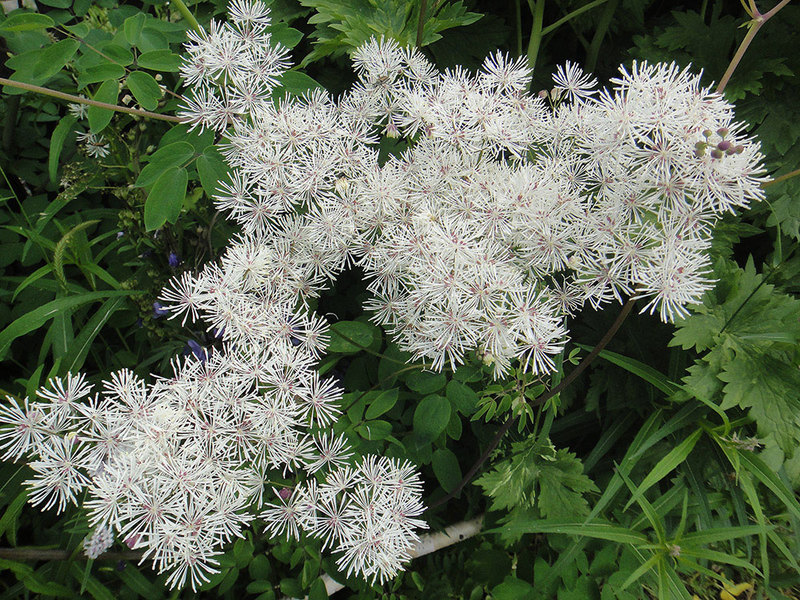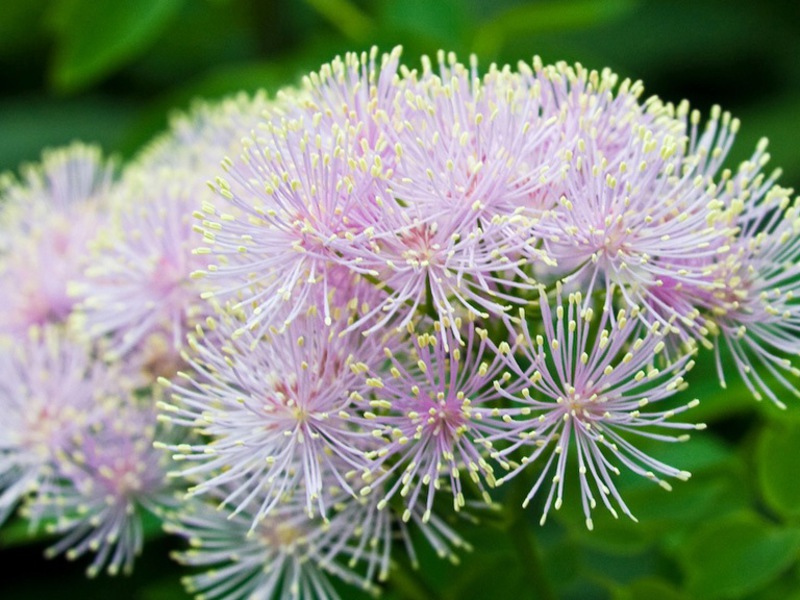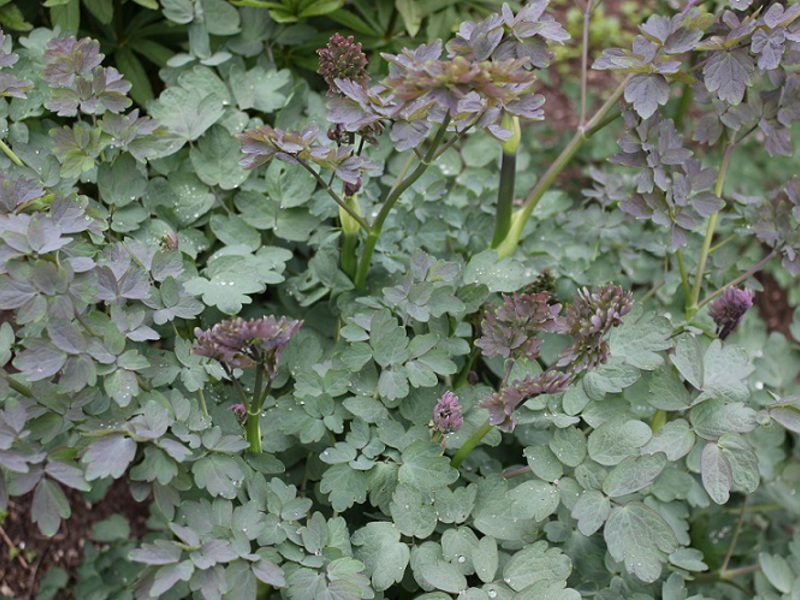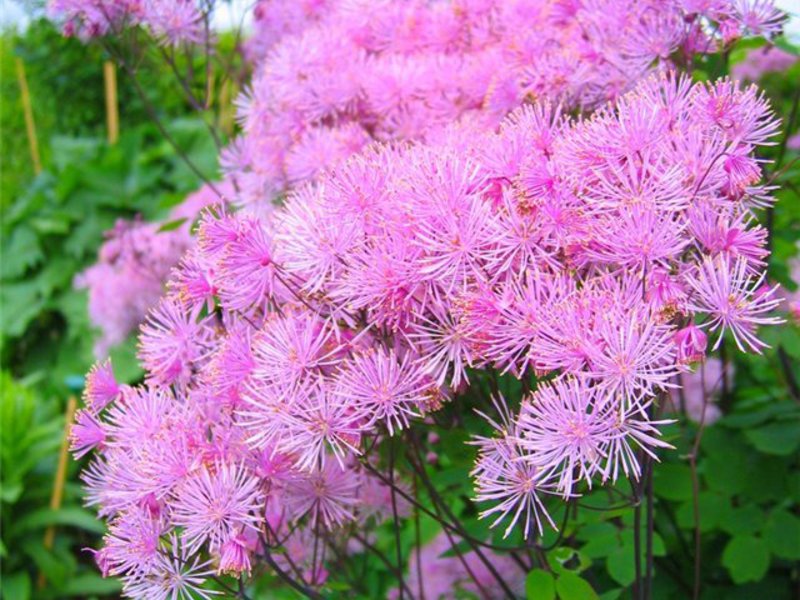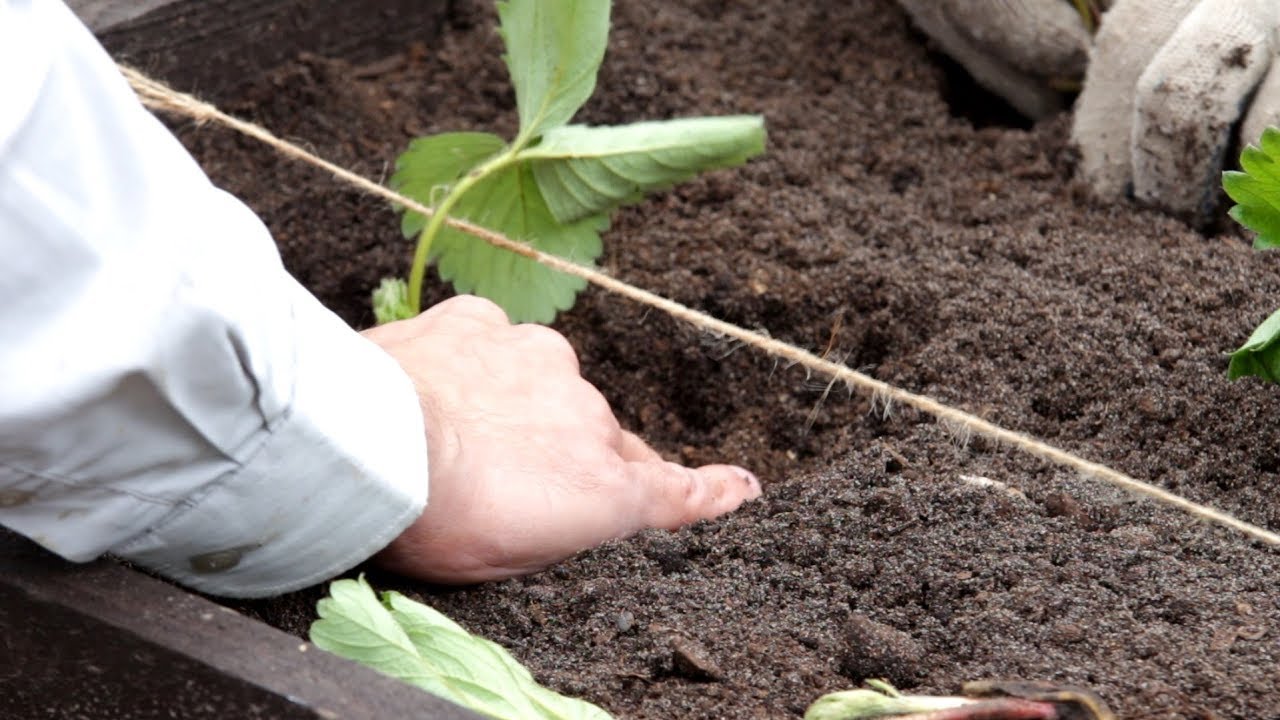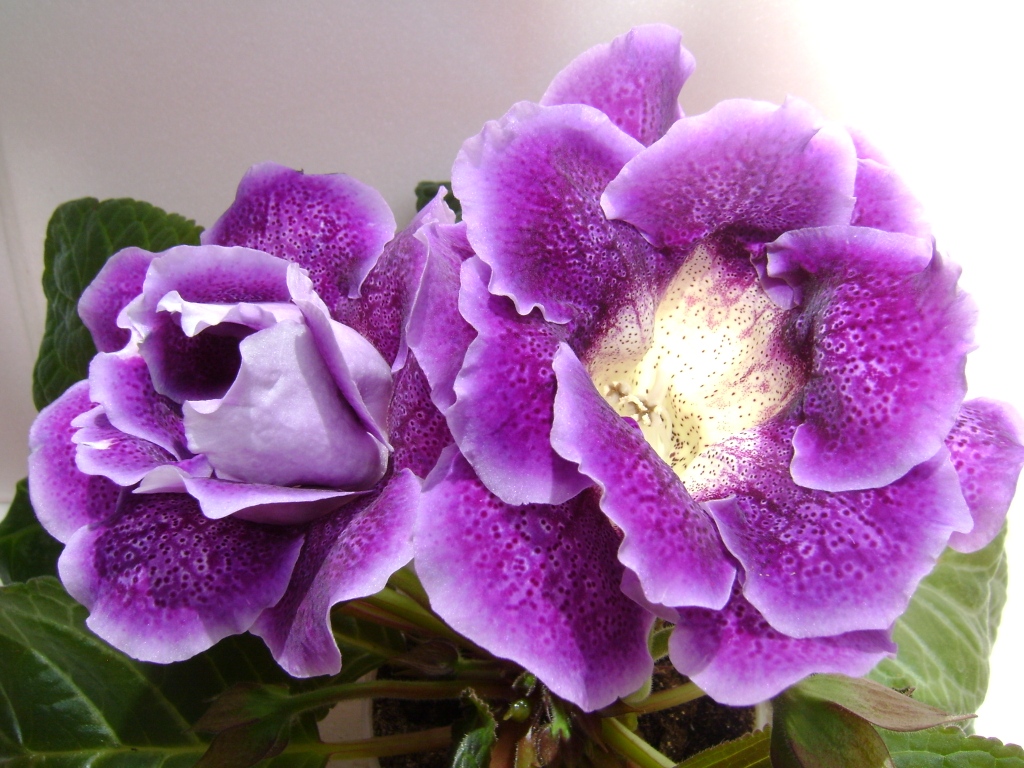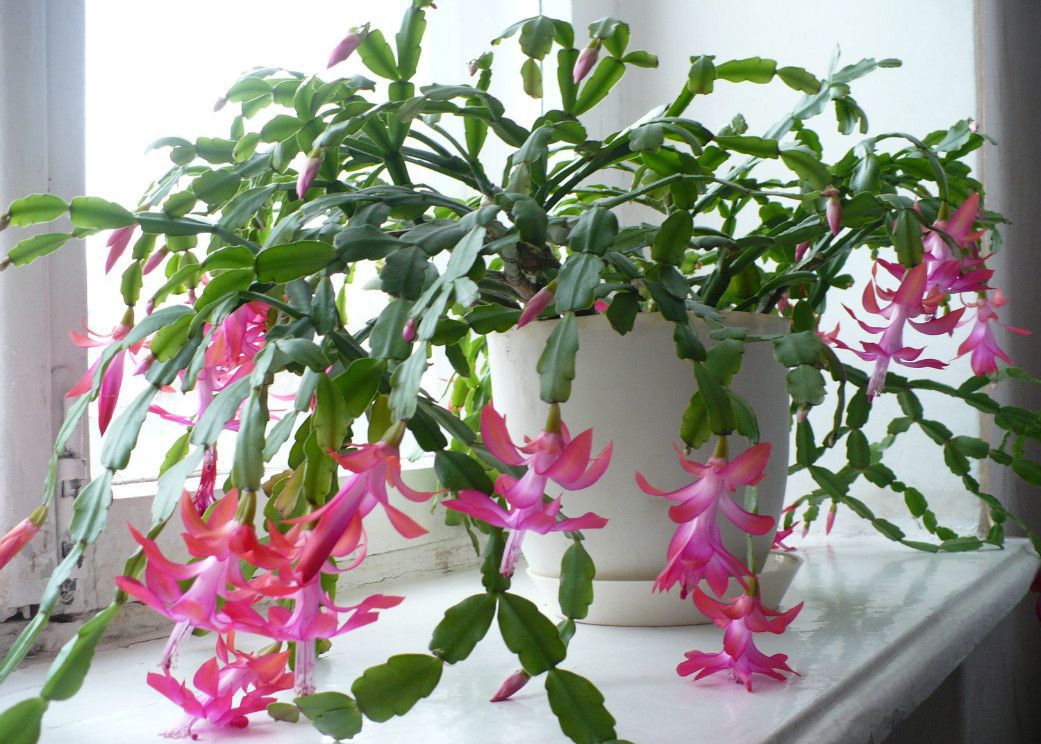Recently, the flowering basil plant has become increasingly popular among gardeners for its excellent decorative characteristics and medicinal properties. Many beauty lovers are attracted by its resistance to frost, unpretentiousness in planting and care, and cultivation that does not require special recommendations. When the basilicum blooms, it seems that fluffy translucent clouds are hovering over the garden.
Content
Vasilistnik: photo, general description, varieties
The plant of the buttercup family is different erect stems without leaves, creeping roots and triangular openwork basal leaves. The height of the basil bush can reach two meters. Its numerous small flowers are collected in racemose, corymbose or paniculate inflorescences. They can be white, lilac, cream, yellow, greenish or pink in color.
The main types of plants
Plant of the Buttercup family has about 150 species, among which the following are most often used to decorate garden plots:
 Basil is a compact perennial herb that can reach a height of 120 cm. Its large gray leaves resemble the openwork leaves of aquilegia. Basil blooms with small fragrant lavender or white flowers, which are collected in a round, loose panicle. Flowering begins in June and lasts for about two months. Breeders have bred a large number of varieties of the water-bearing plant species, which are distinguished by dark red, purple and lilac-pink flowers.
Basil is a compact perennial herb that can reach a height of 120 cm. Its large gray leaves resemble the openwork leaves of aquilegia. Basil blooms with small fragrant lavender or white flowers, which are collected in a round, loose panicle. Flowering begins in June and lasts for about two months. Breeders have bred a large number of varieties of the water-bearing plant species, which are distinguished by dark red, purple and lilac-pink flowers.- The Delaway Basil is a herbaceous shrub with erect stems up to one and a half meters high. Differs in openwork foliage and terry purple-lilac and pink flowers that resemble pumpkins. In August, large, oblong leaflet fruits ripen. The Delaway Basil blooms in late summer. By the famous Dutch architect, he was included in the list of plants that must be grown in the garden.
- The stinking basil is a herbaceous plant with a height of 15 to 65 cm. Its feathery leaves without stipules are obovate or rounded and have solid or serrated lobes. Inflorescences are collected from small spreading flowers. Each flower is distinguished by stamens with yellow anthers and yellowish-purple sepals. Basil smelly got its name from the flowers that have an unpleasant odor. Flowering begins in mid-June and lasts until the end of July.
- The hybrid basil is a rhizome plant up to 2.5 meters high. It can have leafless or slightly leafy stems on which grayish-green and red-brown leaves grow.Paniculate inflorescences 15 cm long are collected from small bicolor flowers of light lilac or light yellow color. The plant blooms in July.
- Basil yellow is distinguished by erect stems from 60 to 110 cm in height. On them, sharp-toothed, obovate leaves, dull on top, are evenly located. Small drooping flowers on short pedicels are collected in thyroid-paniculate yellow, fragrant inflorescences. Blooms during the first two months of summer.
- Small Basil is a uniformly leafy herb with a knobby rhizome. Stems up to one meter in height can be erect or curved. On them, alternate leaves, different in shape, grow. Above the plants are sessile, in the middle - multi-petiolar petiole, and below - trifoliate leaves. A drooping or spreading loose panicle consists of small flowers with a green corolla and small stamens. Blooms in June and blooms for two months.
Basil: planting and care
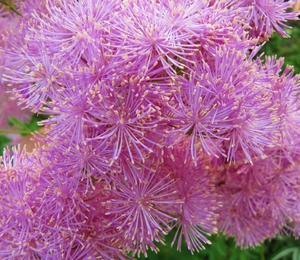 Before planting a perennial plant, you should think over its location on a garden plot, since basilists can grow in one place for more than 10 years. Herbaceous bushes grow slowly and do not like transplants, after which they get sick for a long time. In an open sunny area, they form erect stems. In this case, the plant requires regular watering. They can be planted under trees and near water bodies, since in nature, basil plants grow in river valleys, in mountains and in moist damp forests.
Before planting a perennial plant, you should think over its location on a garden plot, since basilists can grow in one place for more than 10 years. Herbaceous bushes grow slowly and do not like transplants, after which they get sick for a long time. In an open sunny area, they form erect stems. In this case, the plant requires regular watering. They can be planted under trees and near water bodies, since in nature, basil plants grow in river valleys, in mountains and in moist damp forests.
In the shade, the stems of the bushes stretch out, so the best place for them would be semi-shady area away from other plants. Basil plants do not like competition, and the distance from them to other tall crops should be at least 50 cm.
Landing features
Basil plants grow on any soil, but before planting them you need to fertilize wellby adding to the wells:
- 50 grams of any complex mineral fertilizer;
- leaf humus;
- compost.
For better rooting, the bushes are soaked before planting in a solution of Heteroauxin, Kornevin, Humate or Epin. Open roots in the solution are kept for 2-6 hours, and the plant in a pot - 20-30 minutes.
The basil planted in the holes is sprinkled with earth and well watered with a diluted solution in which it was soaked. If the soil has subsided, then it must be poured more so that the root collar of the plant is at the level of the soil. For better survival and moisture retention, the soil around the bush is covered with mulch.
Care
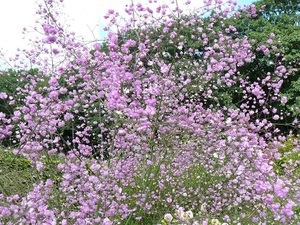 Young plants require regular abundant watering... Adult bushes are rarely watered. If there is no opportunity to water the plants, then they can be planted in groups in areas protected from direct sunlight. Such a planting will greatly facilitate the care of the plant.
Young plants require regular abundant watering... Adult bushes are rarely watered. If there is no opportunity to water the plants, then they can be planted in groups in areas protected from direct sunlight. Such a planting will greatly facilitate the care of the plant.
Basil plants planted in fertilized soil do not need to be fed during the first three years. In the future, plants are fertilized in the spring with special nutrient fertilizers for flowering garden flowers with nitrogen content. In September, for each bush you need make 30-40 grams aboutorganic complex fertilizers. For this, they are embedded in mulch or soil.
Caring for basil plants during the season consists in loosening and clearing weeds from the soil under the plants. Some plant species, such as basil aquifer, require pruning.
Basil breeding
There are three ways to propagate a plant:
- seeds;
- dividing the bush;
- by cuttings.
Seed propagation
This is a rather laborious way of breeding basil. It can be carried out immediately after collecting seeds in September or before winter. Seeds ripening in August may crumble. Therefore, in July, the inflorescences are tied with gauze. Seeds must be dried before sowing.
Seeds planted in spring should undergo preliminary stratification... During seed propagation, varietal characteristics are not preserved. Plants bloom in the second year after planting.
Propagation by cuttings
This is the easiest way of breeding basil, which is carried out in the spring. Sections of a shoot or rhizome can be used as a cutting. The cut off stalk should have a heel. The cut site is treated with a growth stimulator before planting.
Cuttings are planted in a semi-shady place with light soil and covered with a transparent container. To do this, you can cut a plastic bottle or secure a plastic bag. To prevent the planting material from suffocating and starting to rot, take it daily for half an hour need to ventilate... Cuttings should be protected from direct sunlight.
Dividing the bush
In early spring, even before the active growth of the plant, the bushes are dug out and divided into parts. Each division should have 1-3 renewal buds. Separated bushes are planted in a semi-shady place. The soil is well watered and covered with mulch. Caring for the plots consists in regular watering and loosening the soil. If the soil is fertilized during planting, the plant will not need feeding in the first three years.
Basil in landscape design
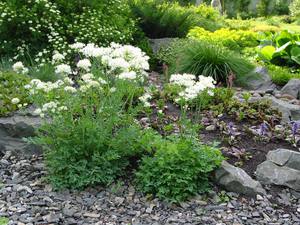 A plant with beautiful openwork leaves and unusual airy flowers is used when decorating a garden plot:
A plant with beautiful openwork leaves and unusual airy flowers is used when decorating a garden plot:
- To create exquisite compositions.
- For planting in large tracts.
- As specimen plants.
- For the decoration of borders.
Basil go well with catchments, phlox and Siberian irises. They look great in compositions with castor oil or buzulnik. The herbaceous plant beautifully sets off shrubs with dark foliage, which include brilliant dogwood and perpurele euonymus.
Basil plants planted in a semi-shaded place will look great both in single plantings and with any other plants. With proper planting and care, the flower will bush beautifully and delight with its delicate flowers for a long time.
